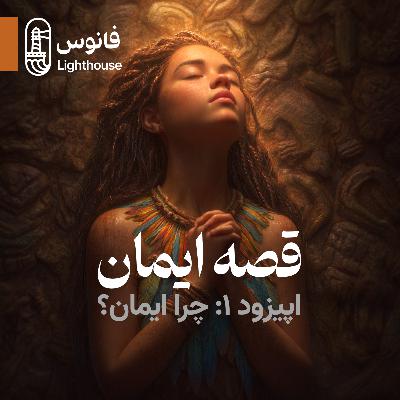قصه ایمان ۲: خدایان انسان گونه
Description
در این اپیزود از قصه ایمان سفری میکنیم به هزاران سال پیش، زمانی که هنوز خطی وجود نداشت و انسان تنها با ابزارهای ابتدایی و تخیلش دنیا رو معنا میکرد. از نخستین تدفینها و آیینهای مرگ که نشان از باور به زندگی پس از مرگ داشتند، تا نقاشیهای اسرارآمیز غارها که بازتابی از جادوی همدلی و شمنیسم بودند. اینجا میبینیم چطور «جانباوری» و نسبت دادن روح به طبیعت، پایهی اولین شکلهای ایمان شد.
در ادامه به انقلاب نمادین گوبکلیتپه میرسیم؛ جایی که برای نخستین بار دین به شکل نهادی آشکار شد و انسانها پیش از کشاورزی، معبد ساختند. بعد قدم میگذاریم به میانرودان—سرزمین سومر، بابل و آشور—جایی که خدایانی چون انلیل، ایشتار و مردوک نه فقط نیرویی در طبیعت، بلکه شخصیتهایی شبیه انسان شدند. در این بخش، حماسهی گیلگمش و داستان طوفان بزرگ را مرور میکنیم؛ روایتهایی که بعدها در تورات و سنتهای دیگر هم تکرار شدند.
این اپیزود درباره مسیریه که ذهن بشر از ارواح ناشناختهی طبیعت به سمت خدایان انسانگونه و سپس به سوی ایدهی خدایی والا و کامل حرکت کرد. قصهای دربارهی مغز ما، ترس و امید ما، و تلاش بیپایانمون برای معنا دادن به زندگی و مرگ.
- Bottéro, J. (2001). Religion in Ancient Mesopotamia. University of Chicago Press.
- Dalley, S. (1998). Myths from Mesopotamia: Creation, the Flood, Gilgamesh, and Others (Rev. ed.). Oxford University Press.
- Kramer, S. N. (1963). The Sumerians: Their History, Culture, and Character. University of Chicago Press.
- Leick, G. (1998). The Babylonians: An Introduction. Routledge.
- Jacobsen, T. (1976). The Treasures of Darkness: A History of Mesopotamian Religion. Yale University Press.
- Hallo, W. W., & Younger, K. L. (Eds.). (2003). The Context of Scripture: Canonical Compositions from the Biblical World (Vol. 1–3). Brill.
- Black, J. A., & Green, A. (1992). Gods, Demons and Symbols of Ancient Mesopotamia: An Illustrated Dictionary. University of Texas Press.
- Walton, J. H. (2006). Ancient Near Eastern Thought and the Old Testament: Introducing the Conceptual World of the Hebrew Bible. Baker Academic.
- Herodotus. (c. 440 BCE). Histories, Book 1 (for temple prostitution claims). Various modern translations used.
- Wright, R. (2009). The Evolution of God. Little, Brown and Company.
- Pritchard, J. B. (Ed.). (2011). The Ancient Near East: An Anthology of Texts and Pictures. Princeton University Press.
- https://answersingenesis.org/the-flood/flood-legends/the-background-of-the-gilgamesh-epic/
- https://armchairopinions.org/whats-the-reason-god-created-humans/
- https://en.wikipedia.org/wiki/Form_of_the_Good
- https://en.wikipedia.org/wiki/Theory_of_forms
- https://www.reddit.com/r/askphilosophy/comments/tx2gfx/when_plato_mentions_god_is_he_talking_about_zeus/
- https://people.wku.edu/jan.garrett/pgods.htm
- https://thephilosophyforum.com/discussion/1385/the-perfection-of-the-gods
- https://www.reddit.com/r/AskHistorians/comments/231m0c/who_was_the_earliest_recorded_god_that_we_know_of/
- https://www.thenotsoinnocentsabroad.com/blog/ancient-gods-of-the-old-testament
- http://www.oeaw.ac.at/en/news/did-the-ancient-greeks-believe-in-their-myths
- https://antigonejournal.com/2024/03/plato-prophet-crucifixion
- Armstrong, K. (1993). A History of God: The 4,000-Year Quest of Judaism, Christianity, and Islam. Ballantine Books.
- Tigay, J. H. (1985). The Evolution of the Gilgamesh Epic. University of Pennsylvania Press.
- Sarna, N. M. (1991). Understanding Genesis. Schocken Books.
- Hendel, R. (2008). Remembering Abraham: Culture, Memory, and History in the Hebrew Bible. Oxford University Press.







سلام و درودها! قدم به قدم داریم پیش می ریم. خسته نباشید!
ممنونم جذاب بود